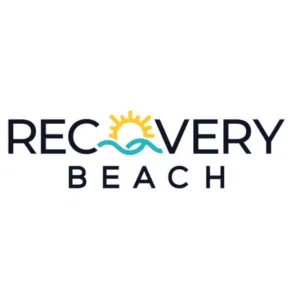Attention Deficit Hyperactivity Disorder (ADHD) is a serious neurodevelopmental condition that affects individuals of all ages, but it mostly impacts young people. In recent years, we have seen a rise in the prescription of psychostimulant medications to manage ADHD symptoms. This has raised concerns about the appropriate and responsible use of these powerful drugs.
The rising cases of ADHD diagnoses, alongside the widespread reliance on psychostimulants as a primary treatment approach, underscores the need for a closer look at this trend. Psychostimulants, such as amphetamines and methylphenidate, have become the go-to intervention for managing the core symptoms of ADHD, including inattention, hyperactivity, and impulsivity. However, the long-term effects of this pharmacological approach, especially on the developing minds and bodies of young people require careful consideration.
Understanding Trends in Psychostimulant Prescriptions
Recent studies and healthcare reports paint a concerning picture of the rising cases of psychostimulant prescriptions for ADHD in young people. Over the past decade, researchers have documented a steady increase in the number of children and adolescents receiving these medications, with some regions reporting a doubling or even tripling of prescription rates.
Comparing current trends to historical patterns reveals significant fluctuations in the use of psychostimulants. While the early 2000s saw a surge in prescriptions, a brief period of decline followed in the late 2000s and early 2010s. However, the past several years have witnessed a resurgence, with psychostimulant use once again on the rise, particularly among youths.
Many factors could have led to this increase, including increased awareness and recognition of ADHD, changes in diagnostic practices that may be leading to overdiagnosis, and greater accessibility to healthcare services and pharmacological interventions. Additionally, the societal pressure to excel academically and the perceived benefits of psychostimulants in enhancing cognitive performance may have contributed to the growing demand for these medications.
Impact on Young People
The widespread and long-term use of psychostimulant medications to manage ADHD in young people raises significant concerns about their impact on physical, cognitive, and emotional development.
Prolonged psychostimulant use can lead to physical effects such as reduced appetite, growth stunting, sleep disturbances, and cardiovascular complications. These medications can also impact neural development.
The medications can also have cognitive effects—while these medications may temporarily improve focus, concentration, and academic performance, long-term use can lead to cognitive inflexibility, impaired decision-making, and reduced creative thinking.
These medications can also lead to mood swings, increased anxiety, and the emergence of depressive symptoms.
It is, however, important to acknowledge that psychostimulants can also provide benefits for some young people with ADHD. For example, they can help them manage their symptoms and improve their academic and social functioning. But, the risks and long-term implications necessitate a comprehensive and balanced approach to ADHD treatment.
Non-pharmacological interventions, such as cognitive-behavioral therapy, mindfulness-based strategies, and educational accommodations are more effective in supporting the holistic development of young people with ADHD
Psychostimulant Prescriptions – Regulatory and Ethical Considerations
The prescription of psychostimulants is governed by strict regulations, requiring healthcare providers to adhere to specific diagnostic criteria, monitoring protocols, and dosage guidelines. Regulatory bodies, such as the U.S. Food and Drug Administration (FDA) and the European Medicines Agency (EMA), have issued guidelines that emphasize the importance of comprehensive assessments, ongoing monitoring, and the consideration of non-pharmacological interventions.
However, the reality on the ground often paints a different picture. Concerns have been raised about the potential overdiagnosis of ADHD, driven by factors such as the medicalization of normal childhood behaviors, parental and societal pressures, and the perceived benefits of psychostimulants in academic and professional settings.
The ethical debates surrounding the use of psychostimulants aim to find the balance between the potential benefits and the risks associated with long-term use. Critics argue that the overreliance on medication can lead to the marginalization of other essential aspects of ADHD management, such as evidence-based behavioral therapies, educational accommodations, and lifestyle interventions.
Additionally, there are concerns about the ethical implications of using psychostimulants to enhance cognitive performance.
To address these ethical and regulatory challenges, healthcare providers, policymakers, and educators must work collaboratively to promote balanced and responsible prescribing practices. This includes ensuring that ADHD diagnoses are based on comprehensive assessments that consider the unique needs and circumstances of each individual to determine the best pharmacological and non-pharmacological interventions.
Alternatives and Future Directions
As the prevalence of psychostimulant prescriptions for ADHD in young people continues to rise, it is crucial to explore alternative approaches to managing this complex condition. While medication can play a role in ADHD treatment, a comprehensive, personalized approach that considers the individual’s unique needs and circumstances is essential.
Cognitive-behavioral therapy (CBT), for example, is a highly effective non-pharmacological intervention for ADHD. CBT helps young people develop strategies for self-regulation, impulse control, and task organization without relying solely on medication. Mindfulness-based techniques have also shown promise in complementing the treatment of ADHD.
Lifestyle interventions, such as regular exercise, healthy sleep habits, and dietary modifications, can also contribute to the management of ADHD symptoms. These holistic approaches address the underlying physiological and neurological factors that can influence attention, hyperactivity, and overall well-being.
Furthermore, educational accommodations and assistive technologies can help support young people with ADHD in academic settings. Personalized learning strategies, flexible deadlines, and the use of digital tools for organization and task management can help mitigate the challenges that individuals face.
Ongoing research in the field of ADHD is exploring the potential of novel interventions and the refinement of existing treatments. Researchers are investigating the effectiveness of emerging therapies, such as neurofeedback, transcranial magnetic stimulation, and the use of digital health technologies to manage ADHD symptoms.
Additionally, there is a growing emphasis on the need for a more personalized, multidisciplinary approach to ADHD care. This involves close collaboration between healthcare providers, educators, and families to develop tailored treatment plans that address the unique needs and circumstances of each young individual.
Conclusion
Increased psychostimulant prescriptions for ADHD in young people underscores the need for a comprehensive, balanced approach to this problem. While medications can play a role in managing the symptoms of ADHD, the potential long-term impacts on physical, cognitive, and emotional development underscores the need for careful consideration and a personalized treatment plan.
Ultimately, the key to addressing the challenges that young people with ADHD face lies in a multidisciplinary, collaborative effort. At LGBTQ and All, we provide valuable resources for individuals and families looking for reliable ADHD therapists and proper treatment options. Our goal is to ensure that youths connect with LGBTQ-affirming providers to ensure they receive personalized care and treatment.














